-
Read more
Few more nice ones hitting the deck
4 FEBRUARY 2025, TUESDAY
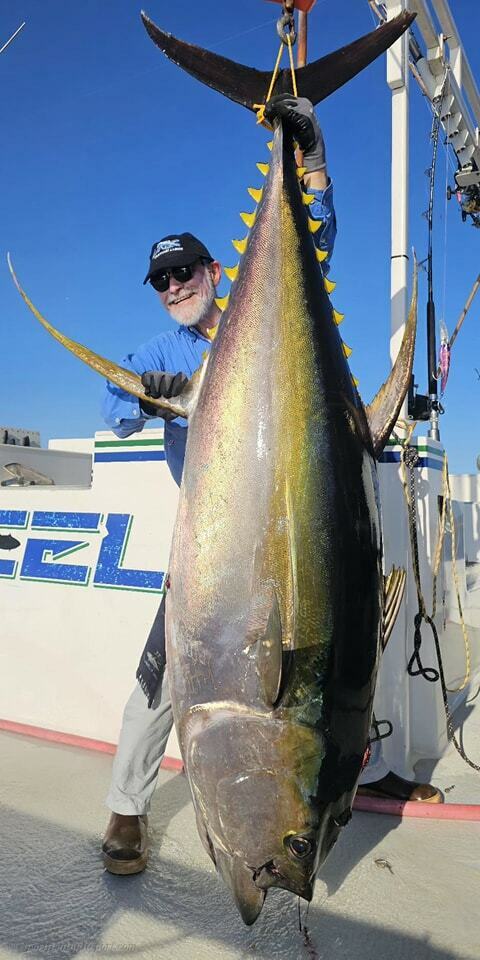
by Excel Long Range Sportfishing
Few more nice ones hitting the deck. Steve Blatt with 263 to end the trip on a high note. We... more » -
Read more
Who's Next?!?!?!Let's keep it going!
3 FEBRUARY 2025, MONDAY
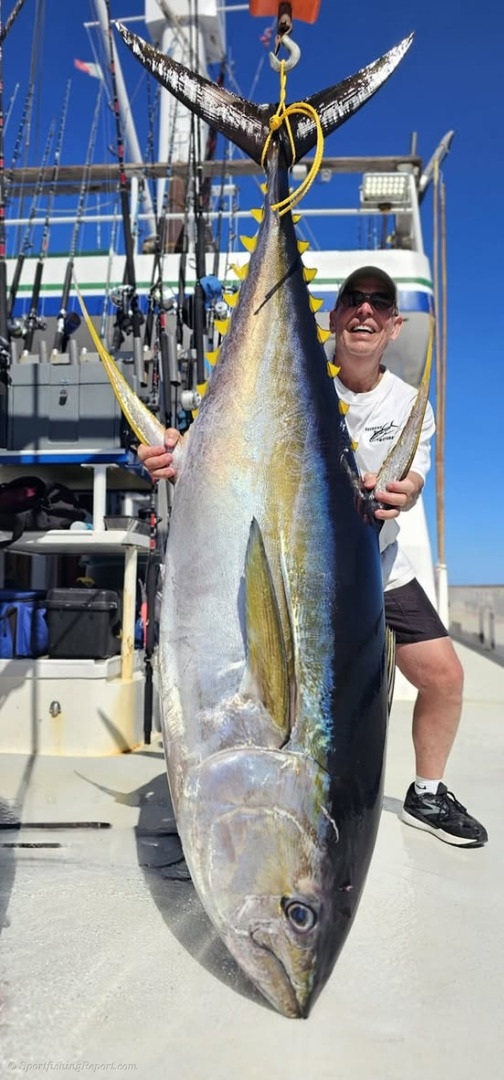
by Excel Long Range Sportfishing
Al Merrick with a 235, and Bob Hulbert with a 214. Putting a little score together now. Who's Next?!?!?!Let's keep... more » -
Read more
Excellent fishing for 80-150lb. fish
28 JANUARY 2025, TUESDAY

by Excel Long Range Sportfishing
We arrived to our destination yesterday and the tuna were waiting. Excellent fishing for 80-150# fish. Today the tuna were... more » -
Read more
Departure- 16 day limited load trip
24 JANUARY 2025, FRIDAY

by Excel Long Range Sportfishing
We left yesterday on our 16 day limited load trip with lots of familiar faces on board. Currently, we are... more » -
Read more
Headed up the line
19 JANUARY 2025, SUNDAY

by Excel Long Range Sportfishing
Team Hoo made a stop on their way up the line and picked up a half dozen nice bluefin for... more » -
Read more
A great day to be on the BIG X!
13 JANUARY 2025, MONDAY
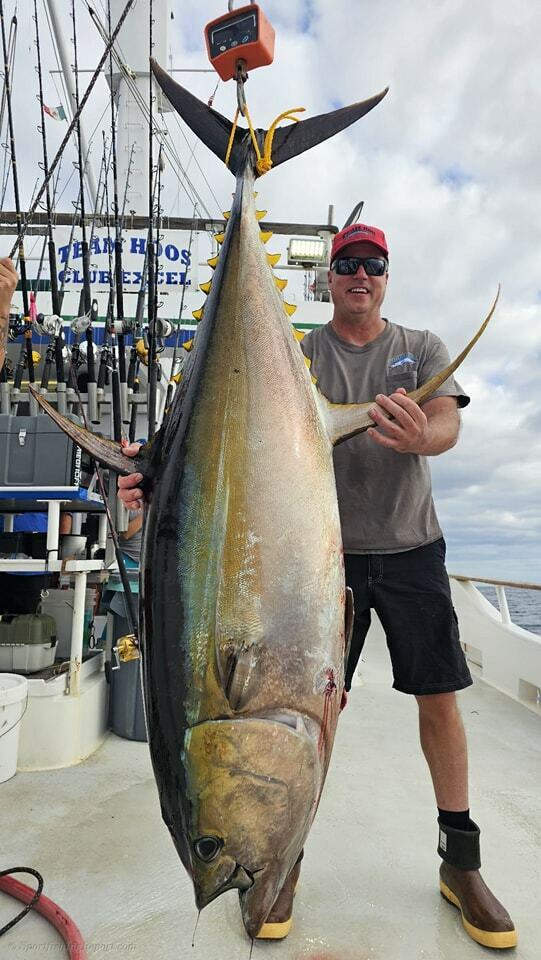
by Excel Long Range Sportfishing
The morning started off with Dean catching his second COW of the trip. Way to go Dean! Team Hoo spent... more » -
Read more
The Fantastic fishing continues down south
12 JANUARY 2025, SUNDAY
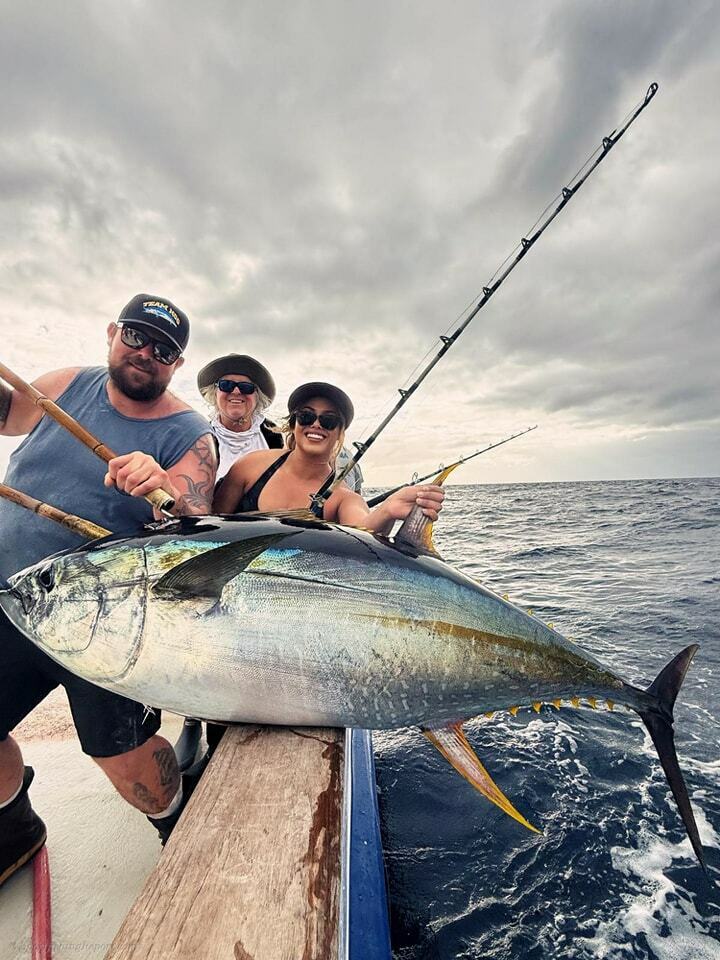
by Excel Long Range Sportfishing
The Fantastic fishing continues down south! Team Hoo is pumped. Steady 100-200+ pound yellowfin with an occasional wahoo mixed in.... more » -
Read more
Aviation and Anglers Three Day Charter
14 DECEMBER 2024, SATURDAY
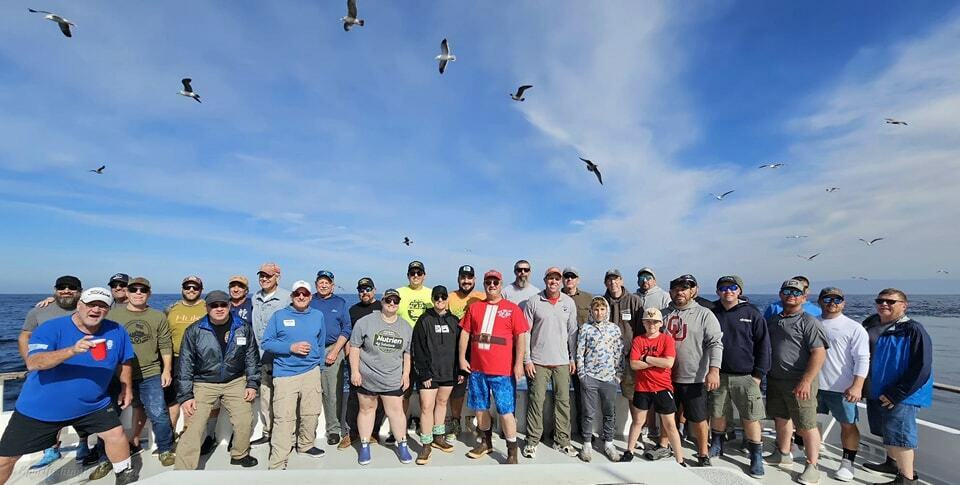
by Excel Long Range Sportfishing
We are just wrapping up our Aviation and Anglers three day charter and everyone on board is pumped! Excellent fishing... more » -
Read more
Had a fun day catching mixed yellowfin and bluefin
10 DECEMBER 2024, TUESDAY
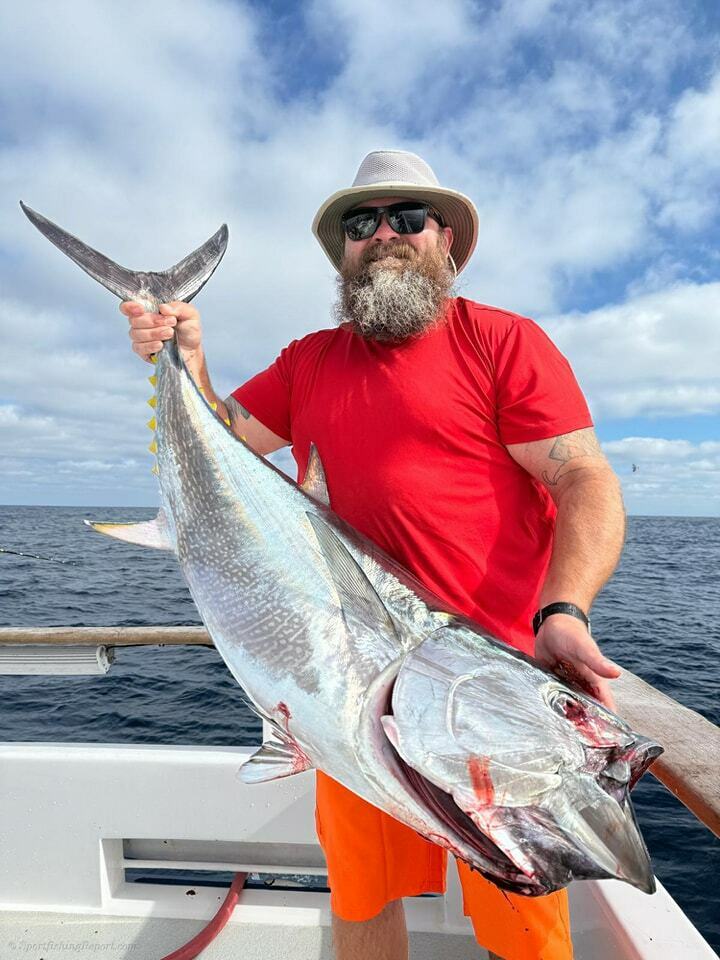
by Excel Long Range Sportfishing
Had a fun day catching mixed yellowfin and bluefin. Currently headed up the beach to make a few drifts before... more » -
Read more
Absolutely incredible fishing for the past couple of days!
7 DECEMBER 2024, SATURDAY
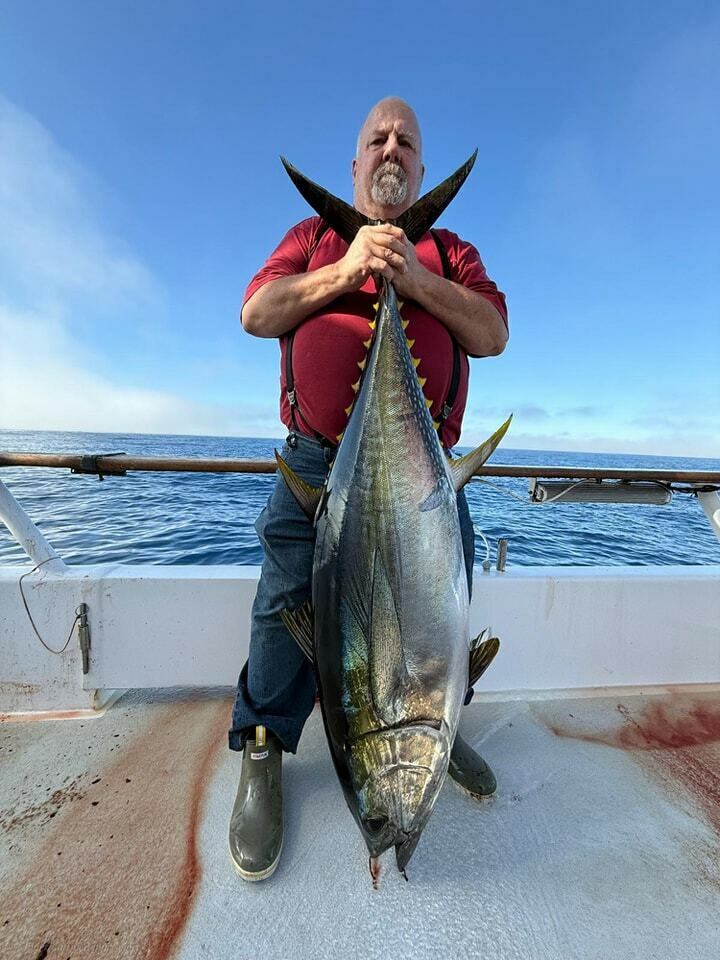
by Excel Long Range Sportfishing
Absolutely incredible fishing for the past couple of days! Wide open on yellowtail and beautiful 60-90# tuna. EPIC! ... more » -
Read more
Couple of these fat wahoo around right now
5 DECEMBER 2024, THURSDAY
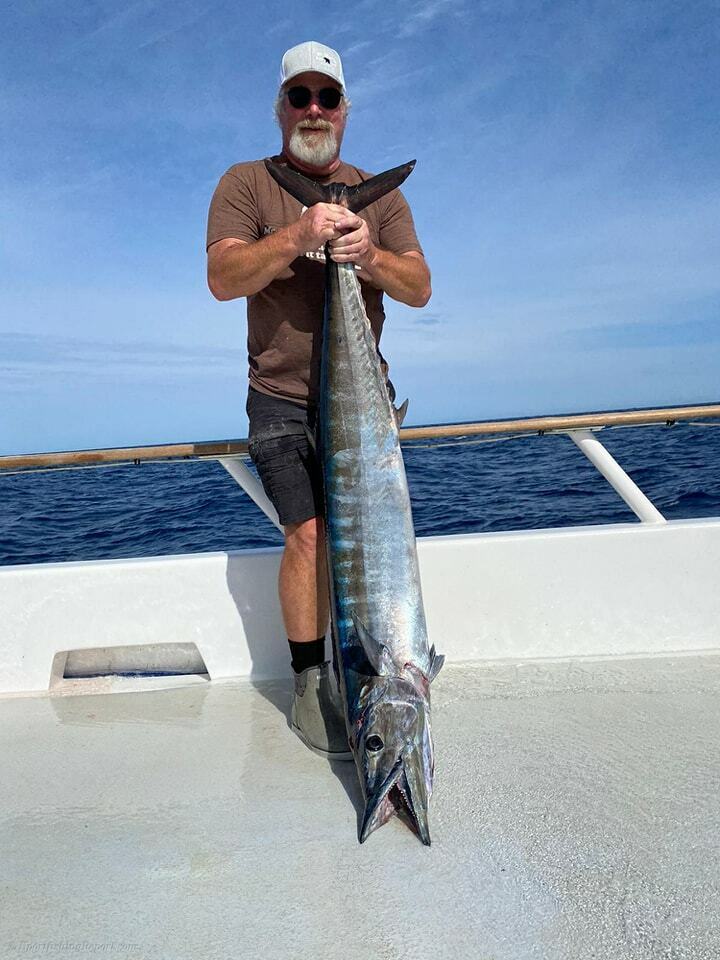
by Excel Long Range Sportfishing
Couple of these fat wahoo around right now. Hoping for a few more in our future! ... more » -
Read more
Big Yellowfin on The Bite Today
4 DECEMBER 2024, WEDNESDAY
-
Read more
They are big and mean down here!
3 DECEMBER 2024, TUESDAY
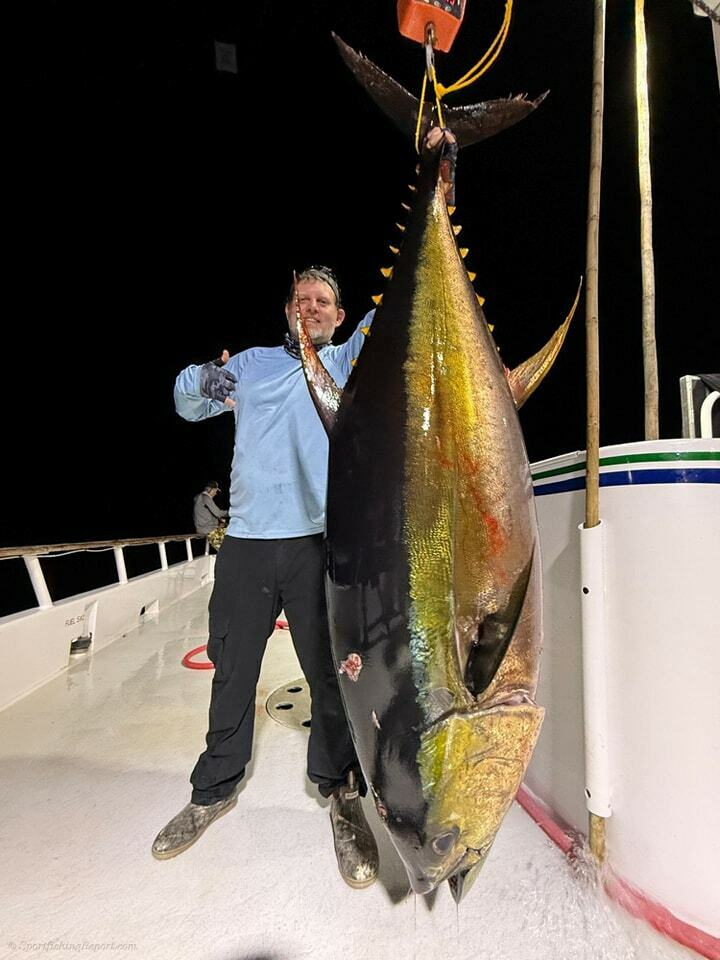
by Excel Long Range Sportfishing
Had a few bites today but only managed to get one in the boat. They are big and mean down... more » -
Read more
Rollin' down on the Bulls Wahoo Scramble 12 day trip
2 DECEMBER 2024, MONDAY
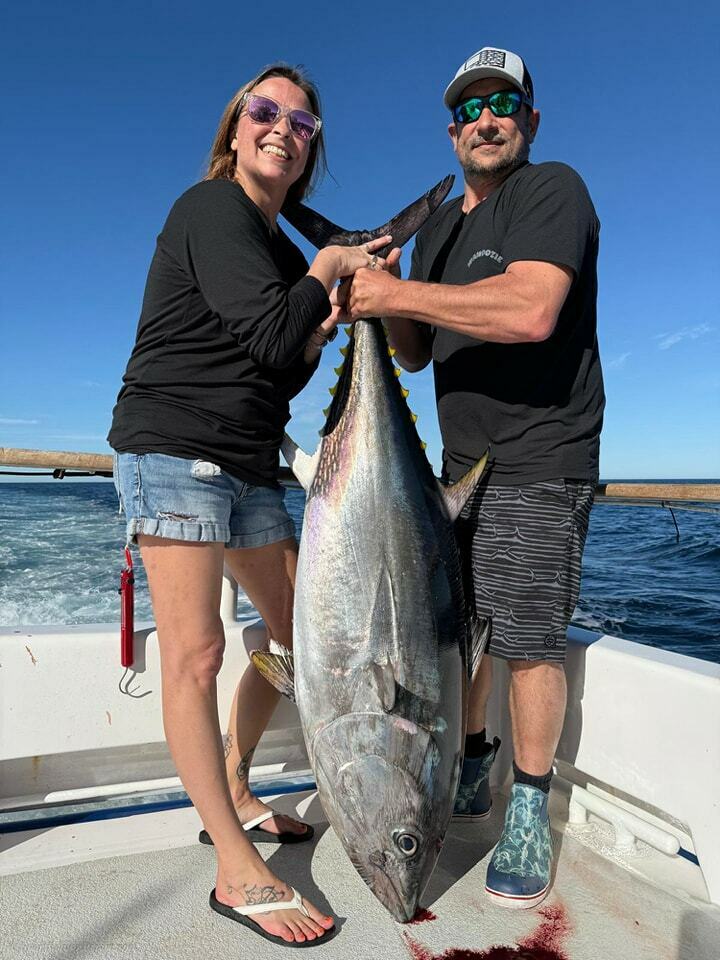
by Excel Long Range Sportfishing
Rollin' down on the Bulls Wahoo Scramble 12 day trip. Made a pit stop to get some chunks and also... more » -
Read more
Excellent fishing this morning
24 NOVEMBER 2024, SUNDAY

by Excel Long Range Sportfishing
Mission Accomplished! Excellent fishing this morning on these beautiful tuna. Team Hoo is "Livin' the dream" right now. What a... more » -
Read more
Excellent yellowtail fishing for Team Hoo
23 NOVEMBER 2024, SATURDAY
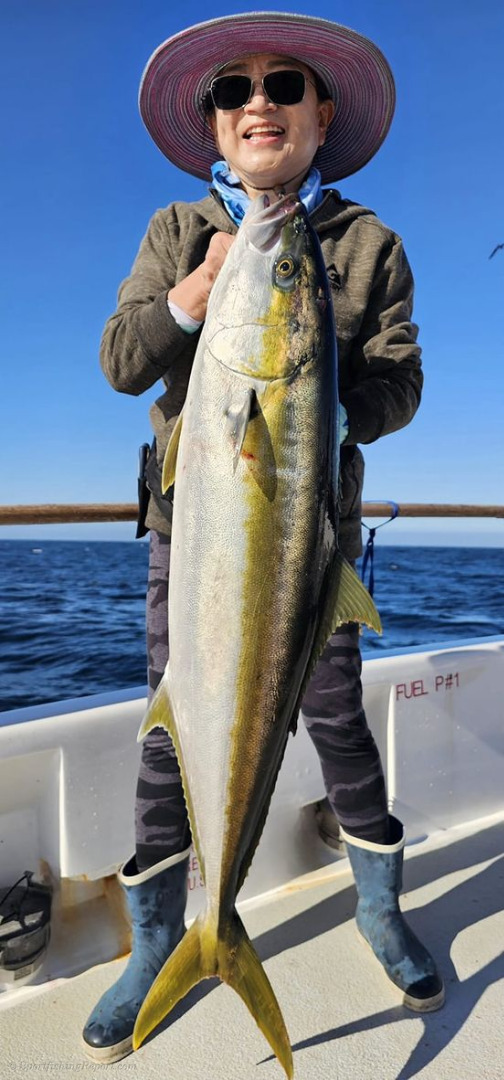
by Excel Long Range Sportfishing
Excellent yellowtail fishing for Team Hoo over the past couple of days. Yoyo jigs and dropper loops were the top... more » -
Read more
Super fun fishing the past few days
21 NOVEMBER 2024, THURSDAY

by Excel Long Range Sportfishing
Super fun fishing the past few days for quality yellowfin, night time yellowtail, and even a few wahoo. ... more » -
Read more
An Epic Start to our TEAM HOO 10 day trip!
18 NOVEMBER 2024, MONDAY

by Excel Long Range Sportfishing
An Epic Start to our TEAM HOO 10 day trip! Excellent fishing for 40-90# yellowfin with some of these beautiful... more » -
Read more
Another fantastic Merritt 10-day trip in the books
15 NOVEMBER 2024, FRIDAY
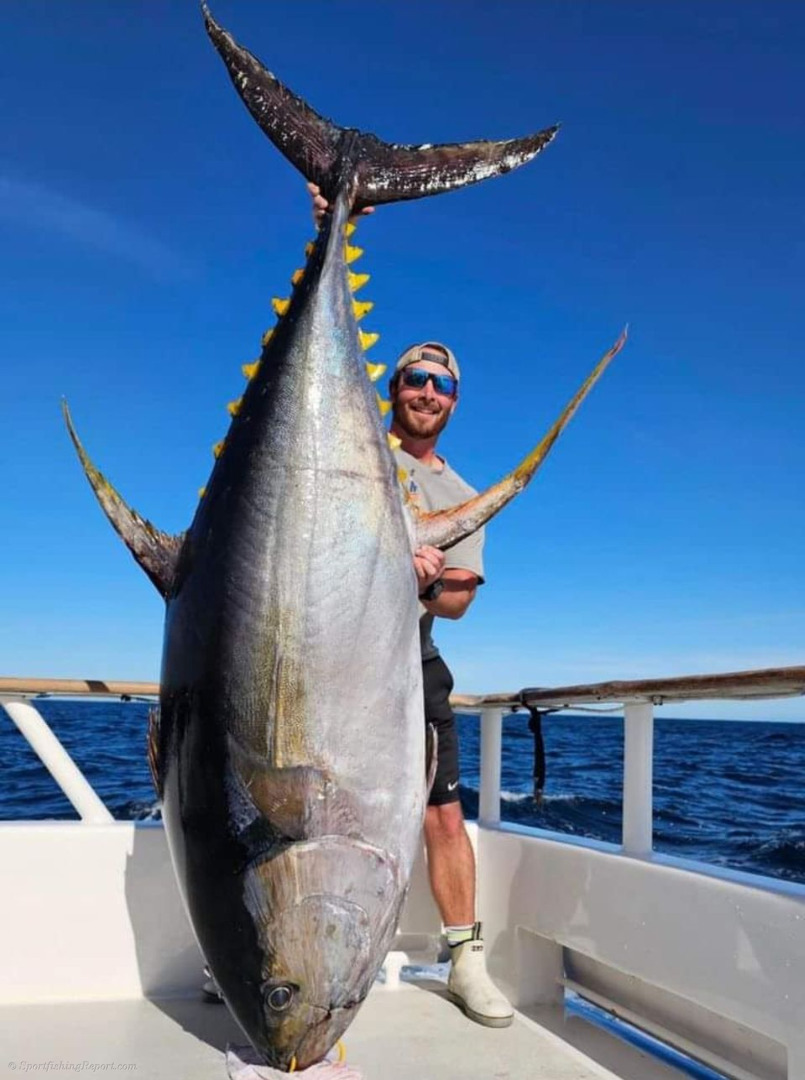
by Excel Long Range Sportfishing
Well, another fantastic Merritt 10-day trip in the books. We will be back to the landing tomorrow morning to offload... more » -
Read more
Hot tuna action this morning for the Merritt group
14 NOVEMBER 2024, THURSDAY
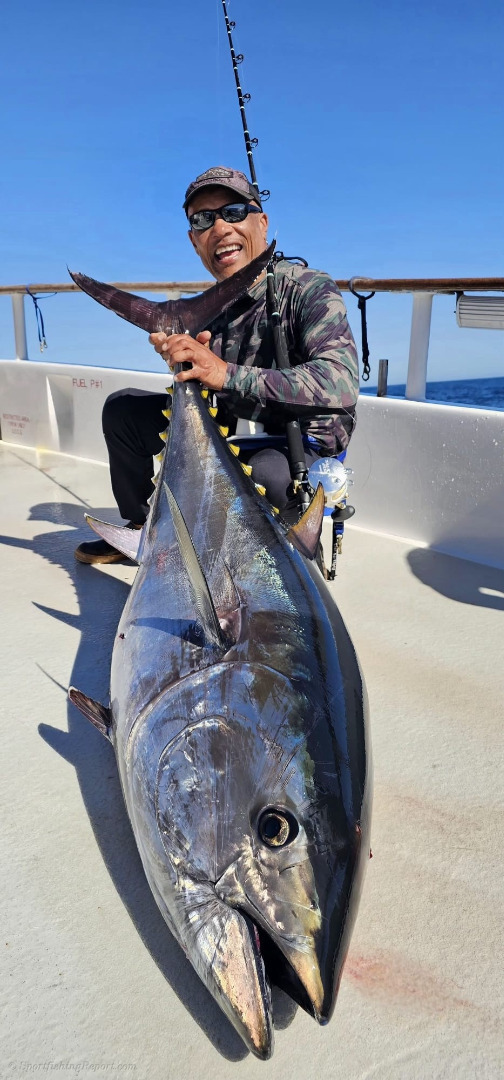
by Excel Long Range Sportfishing
Some hot tuna action this morning for the Merritt group. Nice bluefin for Joel. A truly EPIC trip! ... more » -
Read more
More Reports
View Report Archive
no title...
no date...no content...Fish SpeciesFish Species
Aboard the Excel you are likely to catch an array of fish species that all call these pacific waters home. In order to know what you are dealing with, we have included some general information on some of the species you are likely to catch.
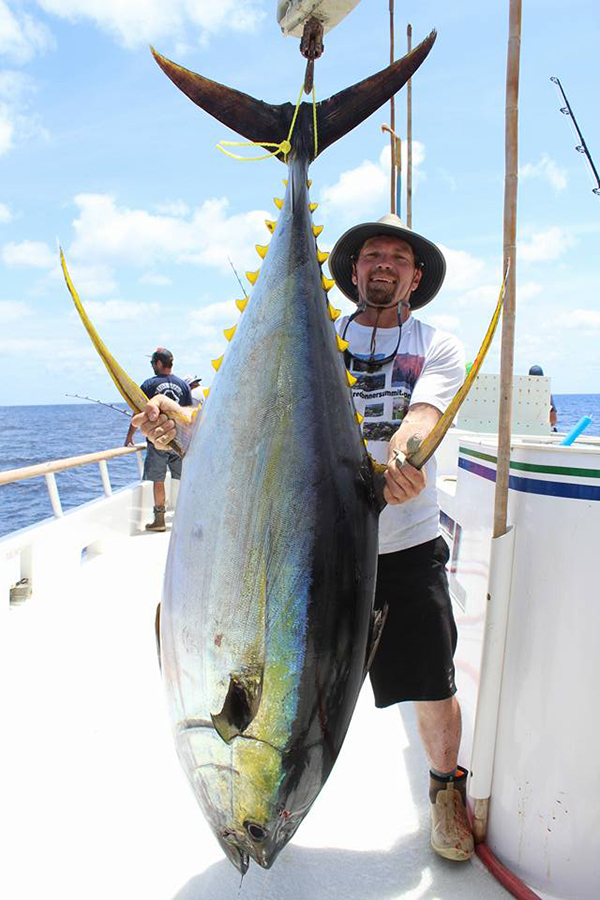
Yellowfin Tuna – (Ahi)
Yellowfin tuna are found throughout the tropical Pacific. The world’s single largest biomass of yellowfin inhabits the Eastern Tropical Pacific Ocean (ETP), ranging from Chile to southern California. Tagging studies indicate that the ETP stock is a single population, with seasonal coastal migrations but no large-scale movement to the central or western Pacific. In the daytime, mature yellowfin associate with dolphins to some degree in all the world oceans. However, the relationship with dolphins is well-developed in the eastern Pacific. ETP tuna stocks have been regulated by the Inter-American Tropical Tuna Commission since 1966.
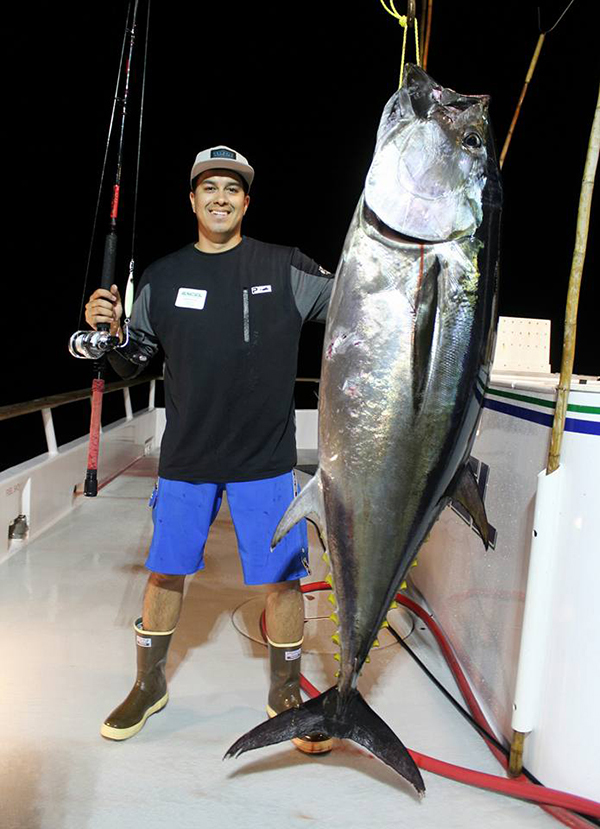
Bluefin Tuna – (Toro)
Bluefin spawn between Japan and the Philippines in the spring and summer and migrate across the Pacific in their first or second year of life, the journey taking seven months or less. These fast-swimming fish may grow to several hundred pounds. Bluefin are rarely encountered south of Cabo San Lucas, Baja California, or north of Point Conception, California. Purse seiners targeting mackerel and sardines occasionally spot the herring-bone pattern of bluefin schools in the Santa Barbara Channel in summer and fall.
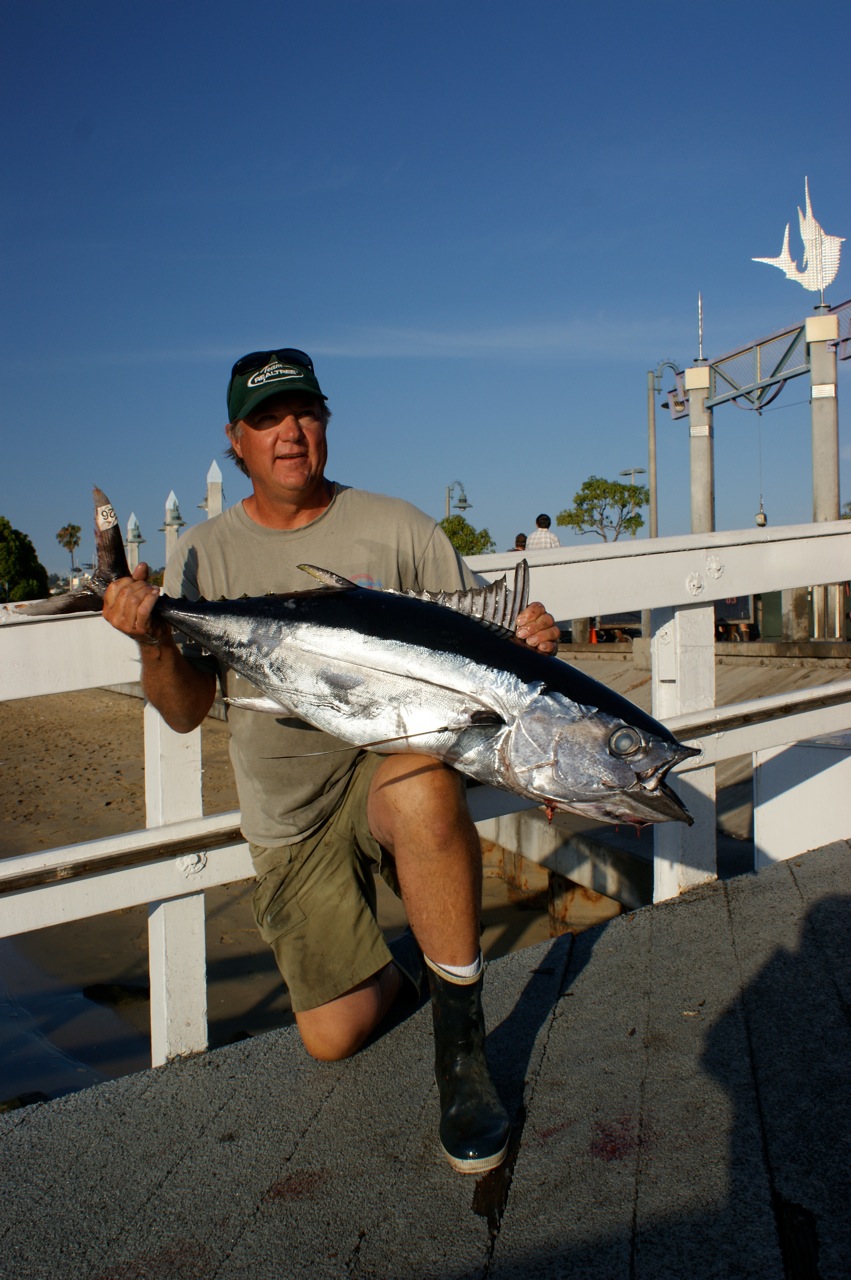
Albacore Tuna
Albacore is the only tuna species allowed to be marketed as white meat tuna. Traditionally the premium canned tuna, this highly migratory species is gaining prestige in the finest white-tablecloth restaurants and sushi bars for its mild, delicate flavor.
A cosmopolitan fish, albacore range in subtropical and temperate oceans worldwide. Off the North American coast in summer and fall, albacore run from Baja California northward to Canada’s Queen Charlotte Islands. California albacore fishermen troll feathered jigs at the ocean surface to catch these swift-swimming fish.
Halibut
These bottom-dwelling flatfish are yearlong residents in sand and mud-bottomed coastal waters, found from the surf zone to about 300 feet deep, from Washington State to Baja California. The area of greatest abundance is southern California and northern Baja. California halibut, with a maximum length of 60 inches and weight to 72 pounds, are smaller than Pacific halibut. Ambush predators with both eyes usually located on the left side of the head, California halibut are non-schooling, unpredictable, elusive fish — the “bread and butter” fish of California’s nearshore groundfish fishery.
Wahoo – (Ono)
Commonly known as wahoo, is a close relative of the king mackerel. Unlike true mackerel, ono rarely school, but groups may be found around fish aggregation buoys. Surface catches indicate that Ono associate with banks, pinnacles and flotsam. However longline catches suggest that this species is also widely distributed in the open ocean. Ono may grow to more than 100 pounds in round weight. Ono flesh is whiter, flakier, and has a more delicate texture than the meat of other fast-swimming, pelagic species. Although Ono is is versatile in its uses, cooking methods suitable for lean fish(those with low fat content) are recommended so that the flesh does not dry out when cooked. One way to retain moisture in a lean fish is to poach.
Rockfish
Rockfish belong to the family Scorpaenidae, or scorpionfishes. One of the most important fish families in California waters, the rockfish group encompasses 59 species, most of them desirable at market. State law allows 13 species to be called Pacific red snapper. These include widow, bocaccio, chilipepper, vermilion, yellowtail, black, and olive rockfish, to name several. However, none of these fish is a true red snapper, which is an Atlantic species not found on the West Coast.
Many rockfish species range from Baja California to British Columbia, and some extend to Alaska. Adults of most species are found at depths to 1,200 feet. Rockfish are basically non-migratory fish. Recognized by the sharp spines on their dorsal fins, rockfish vary in length from 20″ to 37″ and may weigh up to 30 pounds.
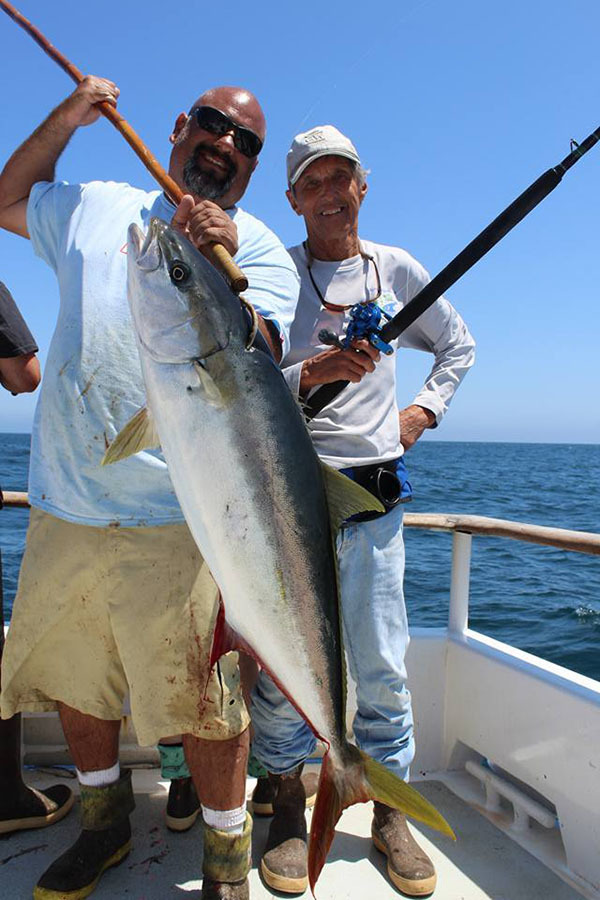
Yellowtail
The Yellowtail is characterized by its long aerodynamic body with a long pointed, “smooth”-looking snout, a mouth ending at the front edge of the eye pupil, blue upper back, silver-white sides and belly, yellow fins, and distinguishing narrow bronze stripe along the middle of the body that becomes yellow posteriorly.
The California Yellowtail is carnivorous and feeds on a variety of fish. Mackerel, sardines, anchovies, squid, and crab are common in the yellowtail’s diet. Often, the California Yellowtail are found in schools feeding at the surface of the water, as well as deeper down. The California Yellowtail are often confused with some tuna species such as Yellowfin, Bluefin, Bonito, andSkipjack tuna.
The yellowtail’s range is circumglobal, in subtropical waters. The yellowtail can be found near Catalina Island, San Clemente Island, Santa Monica Bay, as well as inMexican waters like Baja California Peninsula´s and Sea of Cortes.
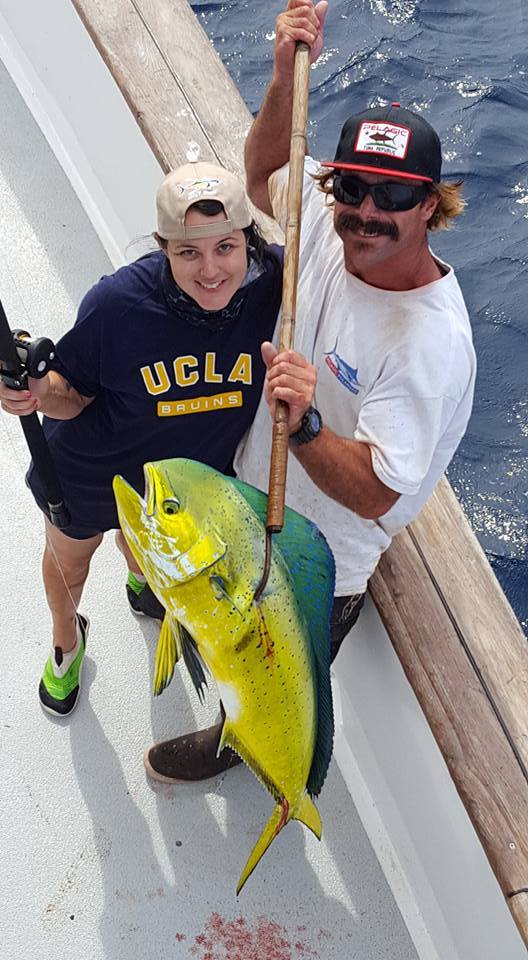
Dorado – (Mahi-Mahi)
These are surface-dwelling ray-finned fish found in off-shore temperate, tropical and subtropical waters worldwide. They are one of only two members of the Coryphaenidae family, the other being the pompano dolphinfish. Mahi-mahi means very strong in Hawaiian.
Dorado have compressed bodies and long dorsal fins extending nearly the entire length of their bodies. Their anal fins are sharply concave. They are distinguished by dazzling colors: golden on the sides, and bright blues and greens on the sides and back. Mature males have prominent foreheads protruding well above the body proper. Females have a rounded head. Females are also usually smaller than males.
Mahi-mahi are among the fastest-growing fish. They spawn in warm ocean currents throughout much of the year, and their young are commonly found in seaweed. Mahi-mahi are carnivorous, feeding on flying fish, crabs, squid, mackerel, and other forage fish. The mahi–mahi’s taste resembles other whitefish, such as flounder, and tilapia.
Custom Programming and Design by TECK.net Inc© All Rights Reserved.
Fish Report publishing service by LongRangeSportFishing.net© All Rights Reserved.
Booking Software provided by Fishing Reservations LLC© All Rights Reserved.






















